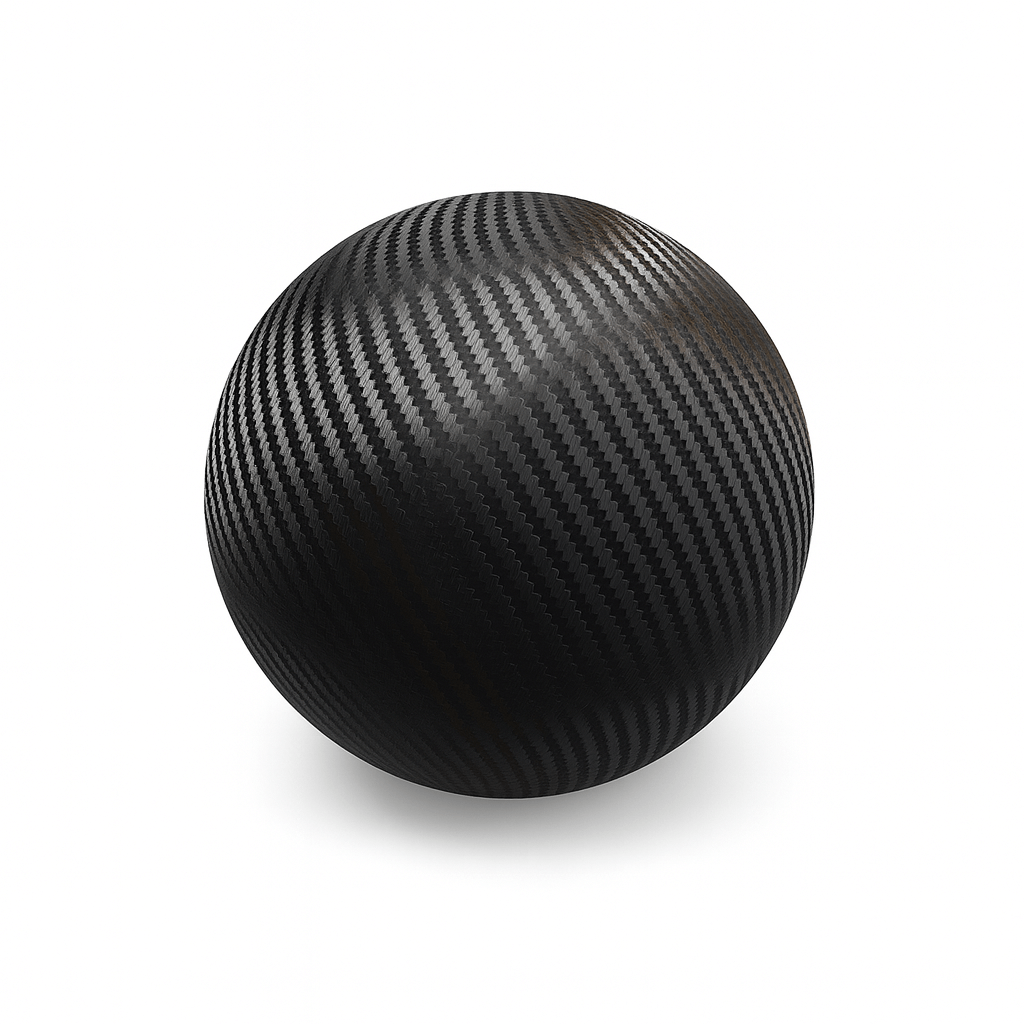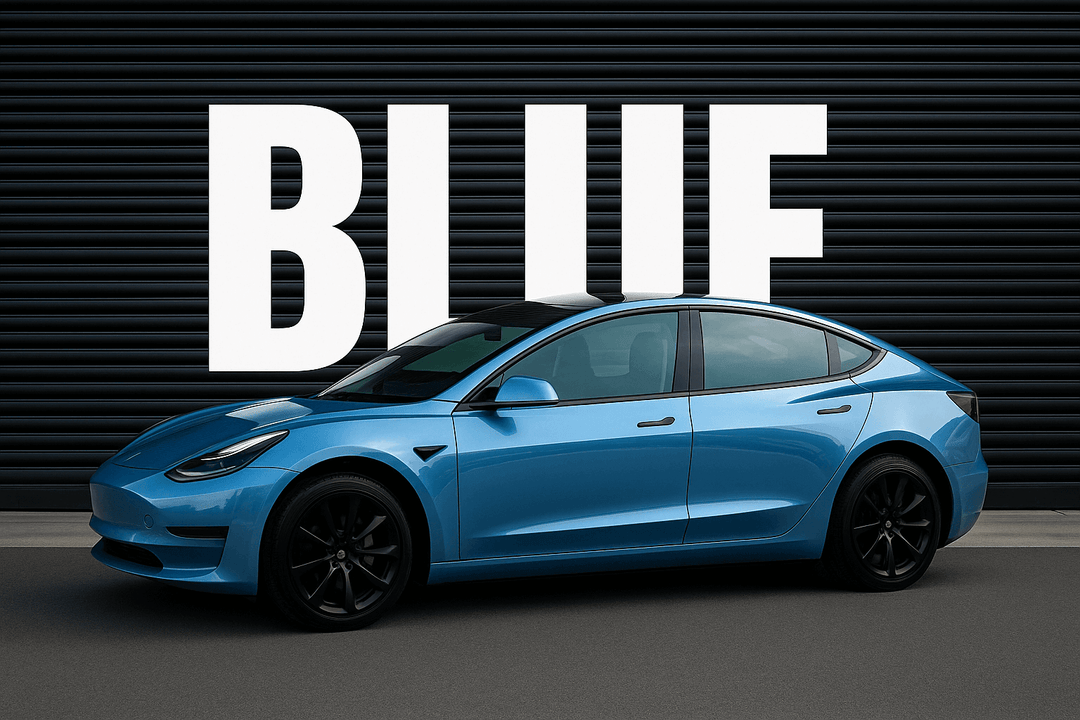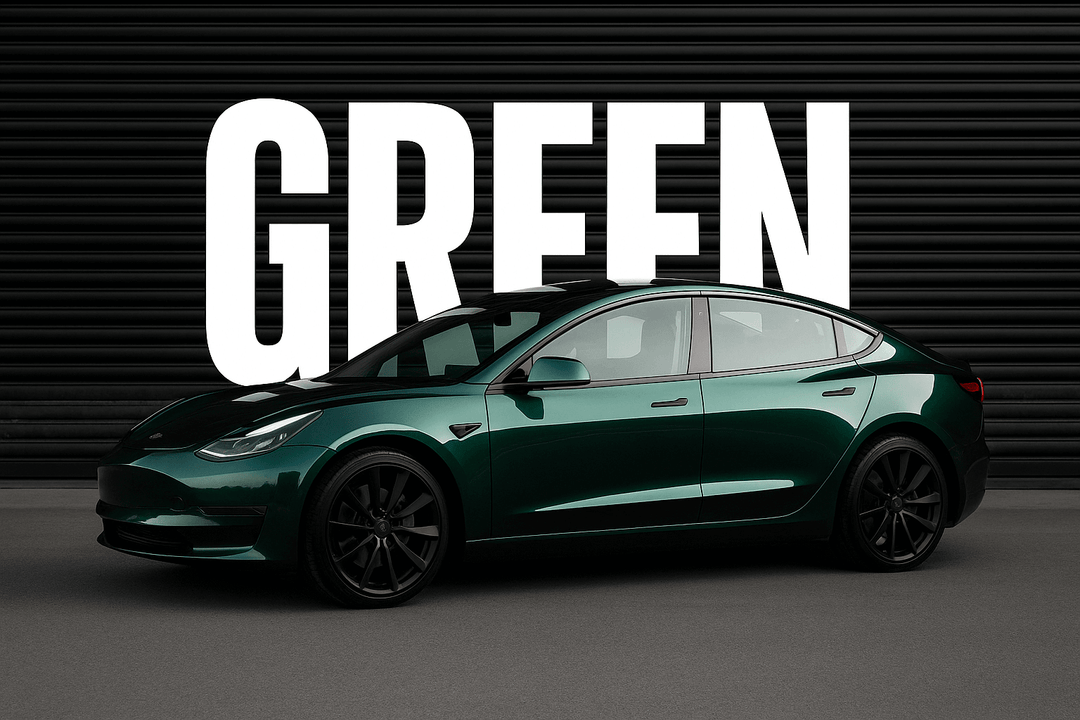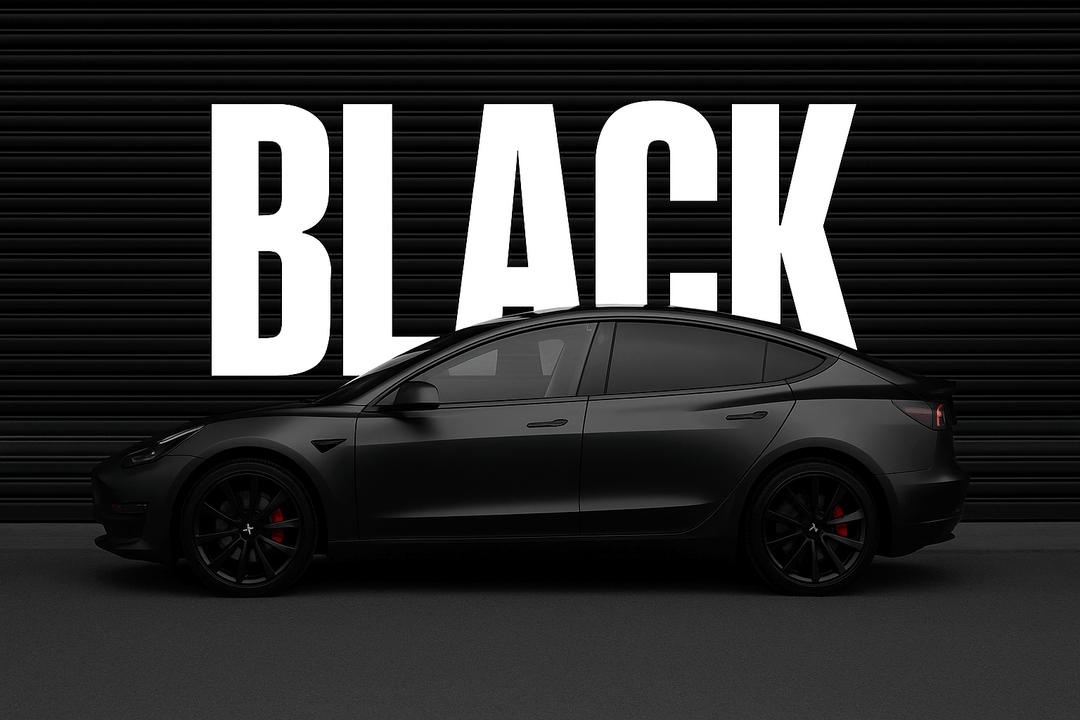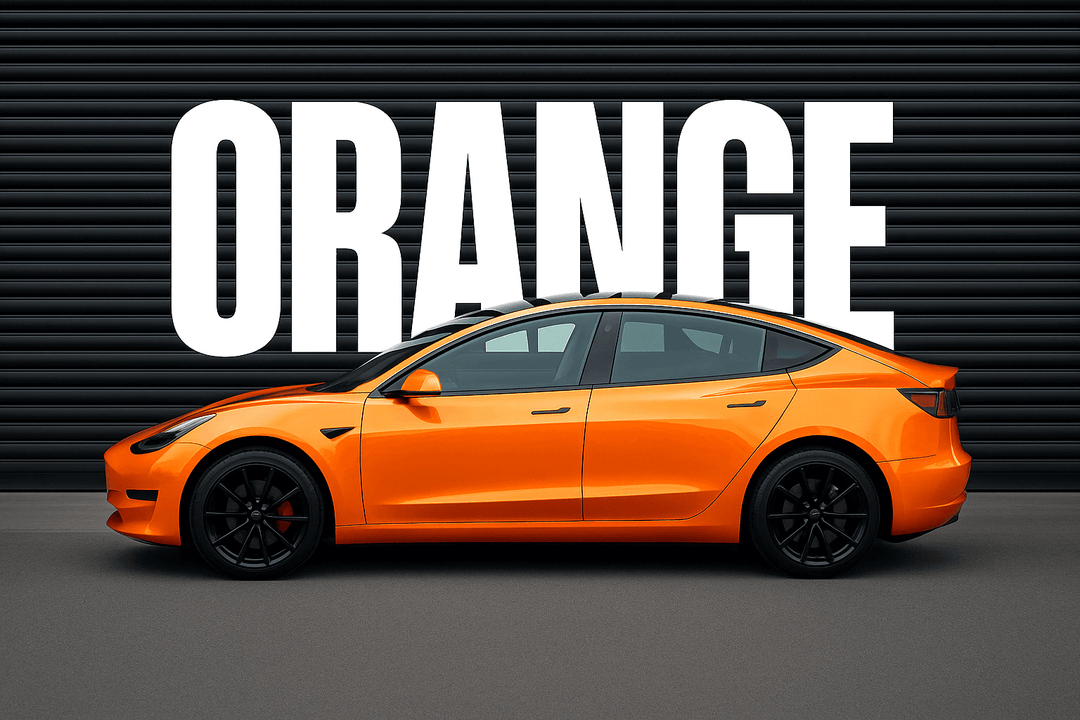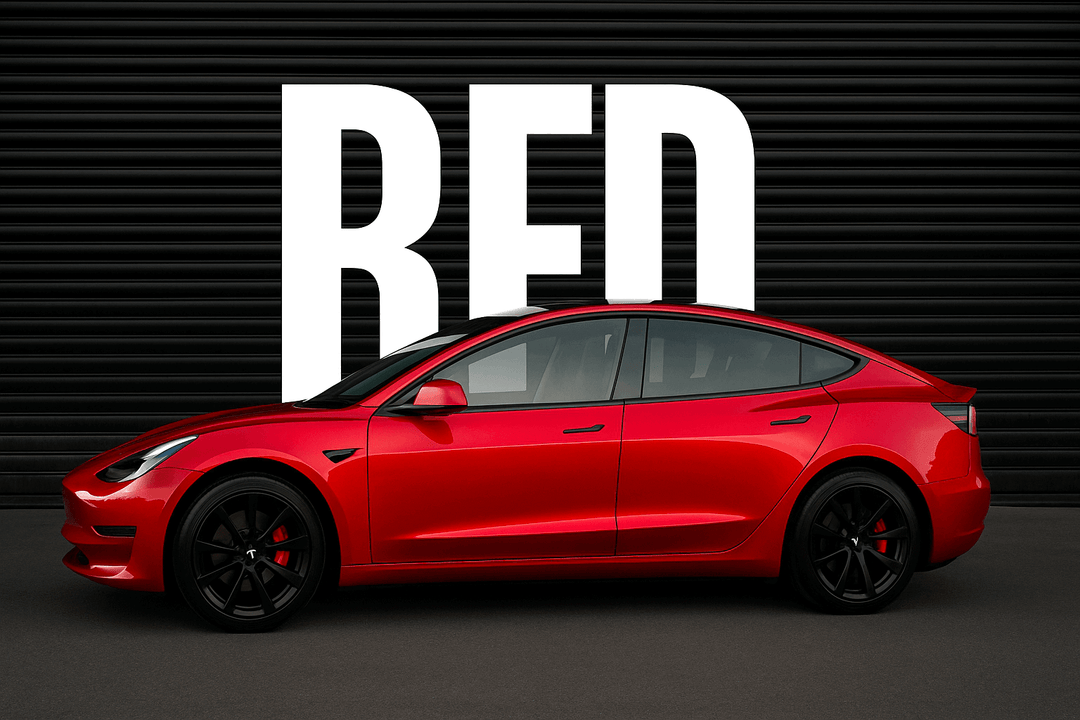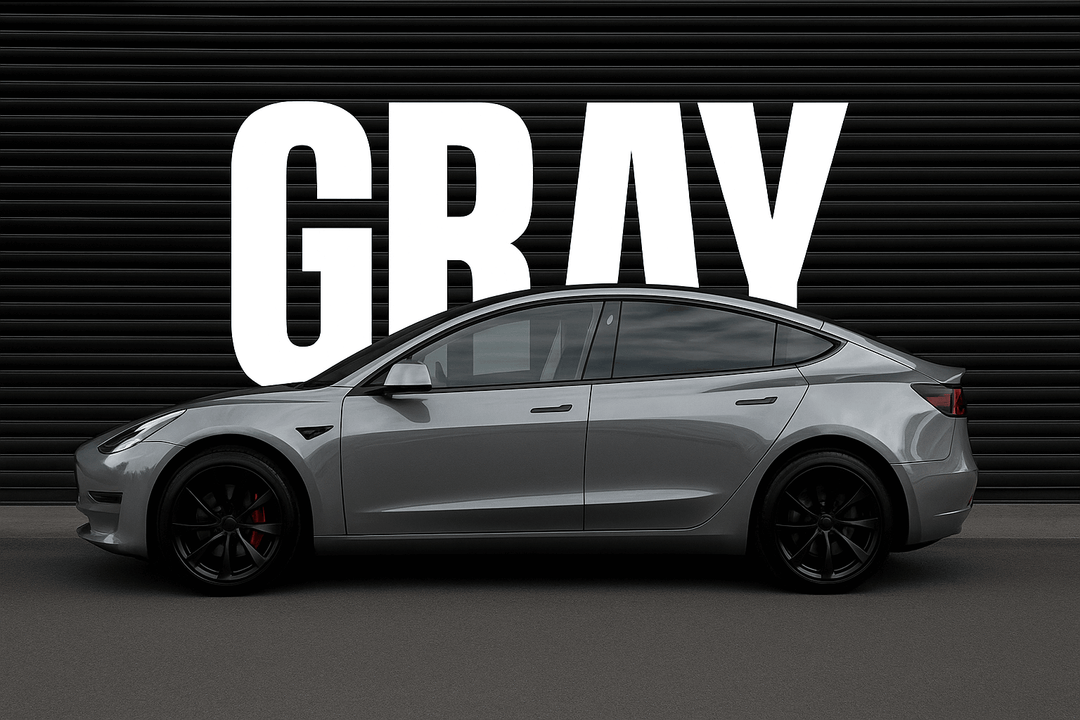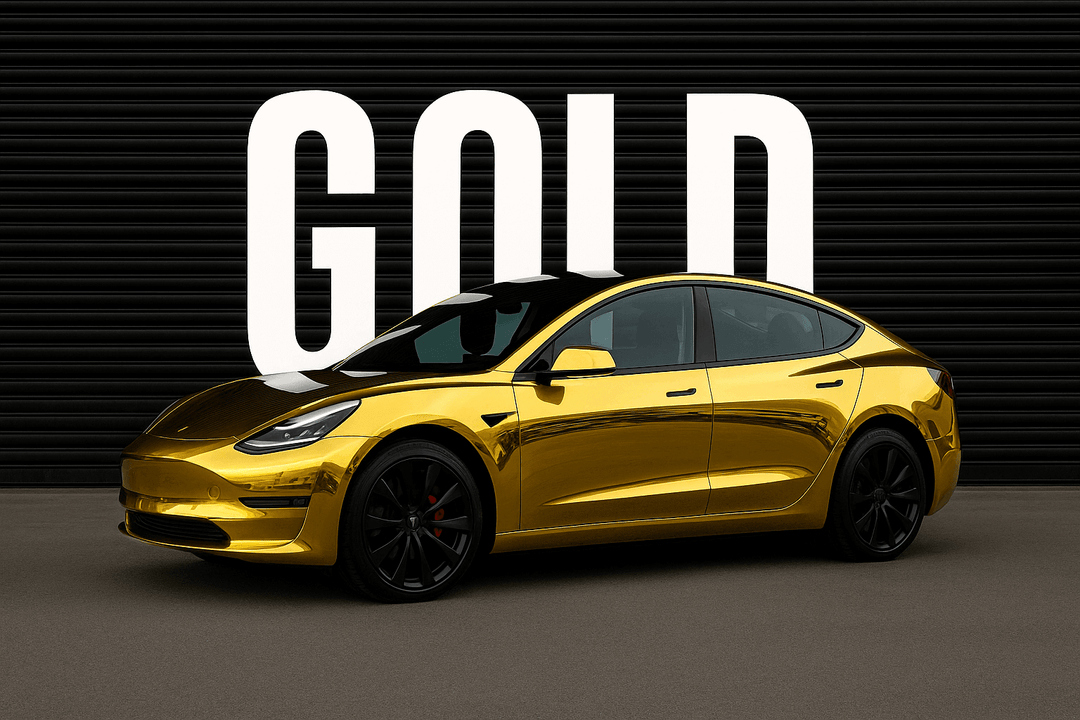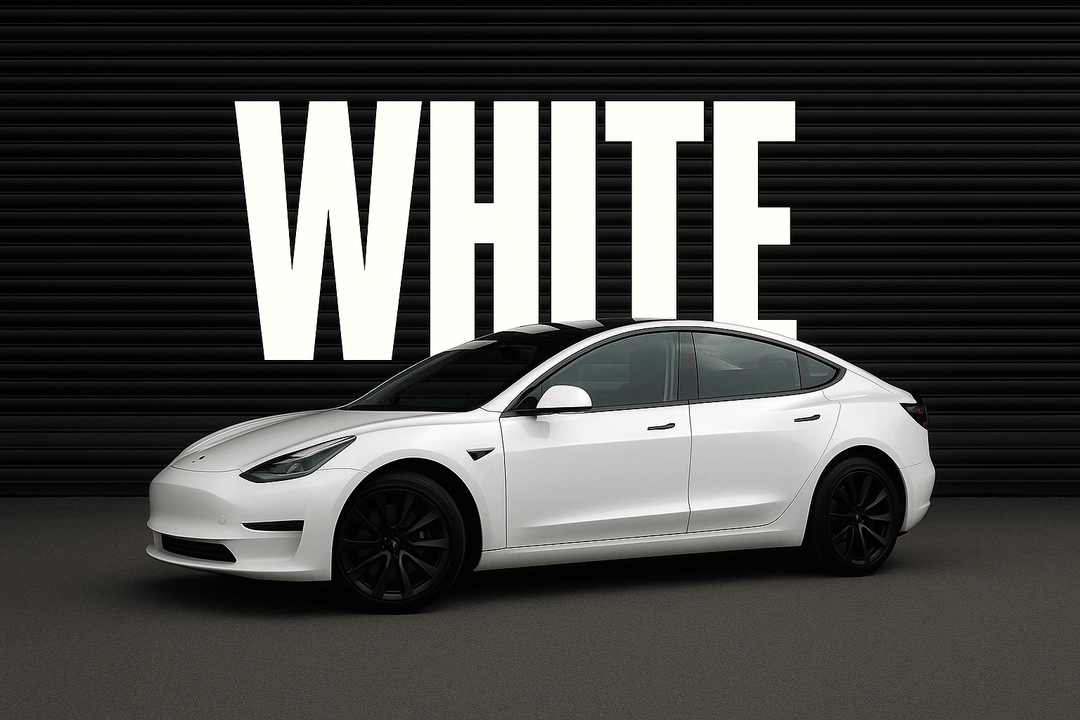Is It Legal to Tint Headlights and Tail Lights
Smoked headlights. Darkened tail lights. Sleek, stealthy styling that transforms the look of any vehicle. Light tinting has become one of the most popular and affordable customizations for car enthusiasts today. Whether you're after a blackout look or just want to soften the harsh glare of factory lights, tinted lenses are an easy way to make your ride stand out.

But here’s the catch: Is it legal to tint your headlights or tail lights?
That’s where things get complicated. While some drivers get away with it, others face tickets, inspection failures, or worse—rejected insurance claims. The truth is, light tint laws vary wildly across the United States. What’s completely acceptable in one state might get you pulled over in another.
In this guide, we’ll break it all down clearly:
-
Which states ban headlight or tail light tinting
-
Where it’s allowed (with restrictions)
-
What federal law says
-
How to stay legal while still achieving that tinted look
Keep reading to find out more about how to tint the lights on your vehicle.
Light Tint Laws Overivew
When it comes to tinting your car’s headlights, tail lights, or other lighting components, the law doesn’t just vary by state—it also starts at the federal level. To understand where light tinting stands legally, we first need to look at the baseline rules set by national safety standards.
Federal Lighting Standards: DOT and FMVSS 108
All vehicles driven on public roads in the U.S. must comply with Federal Motor Vehicle Safety Standard No. 108 (FMVSS 108). This regulation, enforced by the Department of Transportation (DOT), governs all automotive lighting—how bright it must be, what color it should emit, and where each light must be placed.
Here’s the key rule:
-
Headlights must emit white or yellow light only.
-
Tail lights must emit red light.
-
Side markers must be amber (front) or red (rear).
-
Brake lights must be bright red.
Any film, tint, or modification that changes the color of these lights violates these federal standards. That means applying a blue, green, smoked black, or red tint over your headlights is universally illegal, regardless of your state.
Color-Altering Tints
Color-changing tints are especially problematic:
-
Blue or red front lights can mimic emergency vehicles and confuse drivers.
-
Smoked or darkened headlights can reduce brightness, failing to meet visibility requirements.
-
Green, purple, or rainbow hues are eye-catching, but not road-legal.
Even if you think the tint is light or transparent, if it reduces light output or alters the required color, it can land you a fine or worse, be blamed in the event of a crash.
Tail Lights and Brake Lights
Tail lights and brake lights serve one major purpose: alerting the drivers behind you. If they can’t see a bright red signal, it puts everyone at risk. That’s why tinting tail lights is also heavily regulated. Even slightly smoked films can blur the intensity of the brake lights, reducing reaction time.
And unlike headlights, brake lights must shine brighter to indicate when you're stopping. Any tint that dulls that signal, even slightly, can be considered unlawful.
Side Markers and Fog Lights
Some areas, like side marker lights, fall into a bit more of a legal gray zone. While FMVSS 108 does require amber or red colors depending on the marker’s position, many states don’t enforce side marker color quite as strictly. However, that doesn’t mean it’s a free-for-all. If the visibility of your side markers is reduced, it could still result in a violation, especially in states with strict tint laws.
Fog lights, on the other hand, are auxiliary. Many states allow customization here, especially since they’re not always required for inspection. That said, fog lights should never be tinted red or blue, as those colors can be mistaken for emergency lighting.
Do Light Tint Laws Vary From State to State?
Absolutely. When it comes to headlight and tail light tinting, each U.S. state has its own set of rules, and the differences can be surprisingly significant. While the federal government sets baseline standards for safety (like requiring white front lights and red rear lights), states are allowed to go further, especially when it comes to how much tint is too much.
Different States, Different Rules
Some states, like California, Texas, and New York, have strict bans on any form of headlight or taillight tinting that alters visibility or light color. In these places, even a light smoked film could land you a ticket or cause you to fail a vehicle inspection.
Other states, such as Arizona or Florida, allow headlight and tail light modifications—but only if the light’s visible output remains within a legal threshold, often measured by Visible Light Transmission (VLT). For example, if a state requires a minimum 70% VLT, any film or modification that reduces brightness below that number is considered illegal.
And then some states fall into a gray zone. They might not mention light tints explicitly in their vehicle codes, but that doesn’t mean they’re allowed. If your lights appear too dark or altered, it’s still up to the officer’s discretion, and that can vary county by county.
Can You Be Pulled Over for Light Tint?
Yes and no. In many states, law enforcement can’t pull you over solely for a tint violation unless your lights are severely darkened or visibly altered. However, if you're stopped for another reason, like speeding or a broken taillight, and the officer notices your tinted headlights or taillights, they can issue a citation.
Even minor tints may raise flags, especially at night or in bad weather when visibility is critical. And if your car is due for a state inspection, failing due to non-compliant lights is a real possibility.
Driving Across State Lines? It Could Be a Problem
Let’s say you legally tinted your headlights in Nevada, but now you’re taking a road trip through California, where that same level of tint is banned. You could be stopped and fined—even if your car is fully legal in your home state.
Unfortunately, your license plate registration doesn’t protect you from local tint laws in other states. If you're pulled over, the officer enforces the law based on their state's regulations, not where your car is registered.

Light Tint Laws by State Variations
Not all light tints are treated equally, especially across different states. While federal regulations define basic safety standards for vehicle lighting, individual states create and enforce their own tint laws, often with dramatically different outcomes for drivers.
To understand how these laws vary, we need to look at two key factors that influence legality:
What Determines Light Tint Laws?
-
Visible Light Transmission (VLT)
-
This refers to the percentage of visible light that passes through the tinted lens.
-
A lower VLT means darker tint, while a higher VLT allows more light through.
-
Many states set a minimum VLT requirement (commonly 70%) to ensure headlights and tail lights remain bright and safe.
-
Color Restrictions
-
Tints that change the color of headlights or taillights are a major legal red flag.
-
Blue, red, and green lights are often reserved for emergency vehicles, and using these colors on personal vehicles, even unintentionally, can lead to citations.
-
That’s why even a subtle film that gives your lights a color shift is banned in many places.
🚫 A) States That Flat-Out Ban Light Tint
These states have strict vehicle codes that prohibit headlight or taillight tinting altogether, regardless of VLT levels:
-
California
-
Florida
-
Illinois
-
Michigan
-
New Hampshire
-
New York
-
Pennsylvania
-
Texas
-
Vermont
-
Washington D.C.
In these regions, any vinyl film, spray, or modification that darkens or changes the original factory light is generally considered illegal, even if the light output still seems bright.
⚖️ B) States That Allow Tint With Light Transmission Rules
In contrast, several states allow a degree of headlight and tail light tinting—but only if your lights remain bright enough. These states often require your lights to maintain a minimum of 70% VLT, meaning that no more than 30% of light can be blocked by the tint.
Examples include:
-
Alabama
-
Alaska
-
Hawaii
-
Iowa
-
Kansas
-
Louisiana
-
Minnesota
-
North Dakota
-
Ohio
-
Virginia
-
Wisconsin
-
Utah
While tint is not outright banned in these states, law enforcement and inspection stations may test your VLT during stops or annual vehicle checks. If the tint reduces visibility below the legal threshold, it may result in a citation or removal order.
⚠️ C) California: The Strict Standard Explained
California is one of the strictest states when it comes to lighting modifications, and not just because it bans most aftermarket tints.
Under California Vehicle Code §24600, tail lights must:
-
Emit a red color clearly visible from at least 500 feet away
-
Be unobstructed and not dulled or darkened by any covering or film
In practice, this means even a light smoke or tinted vinyl film on your tail lights is illegal, since it interferes with visibility. Similarly, any modification that slightly changes the color temperature or brightness of your headlights can be grounds for a citation.
Even if your lights appear bright to you, California law evaluates visibility from other drivers’ perspectives, prioritizing safety above aesthetics.
Why These Light Tint Laws Exist
You might be wondering why the light tinting looks so good and why it is so heavily regulated.
It all comes down to one word: safety.
1. Visibility and Driver Reaction Time
Headlights and taillights serve more than just aesthetic purposes; they’re critical safety features that protect both you and everyone else on the road. When you apply a tint film, even a light one, it can reduce the brightness and clarity of your lights. That reduction, especially at night or in bad weather, can mean the difference between being seen and getting into an accident.
Dimmed headlights can prevent you from seeing far enough ahead in low-visibility conditions, while darkened tail lights or brake lights can delay a driver’s reaction behind you. And when you alter the color—say, by using a film that gives a purple or blue tint—you introduce confusion. Other drivers expect to see red when you brake and white when you approach. If they don’t, they might hesitate or misinterpret your movements.
2. Color Consistency = Predictable Driving
Imagine if everyone had different colored brake lights—some red, some orange, some barely visible through heavy tint. That would make it harder for other drivers to react instinctively. That's why federal law requires specific light colors and brightness levels.
3. Legal Clarity Through VLT Standards
While the Federal Motor Vehicle Safety Standards (FMVSS 108) provide baseline rules on light color and functionality, they also allow states to enforce their own visibility guidelines through Visible Light Transmission (VLT) thresholds.
Many states set a minimum percentage of light that must pass through a tinted lens—often 70% or more. This creates a clearer legal standard for both vehicle owners and enforcement officers. If your tint blocks more light than allowed, it’s considered illegal, even if the lights still appear bright to the naked eye.

Suggestions for Tinting Vehicle Lights in a State With Strict Laws
If you live in a state that bans or severely limits headlight and tail light tinting, it can feel frustrating, especially if you’ve been eyeing that perfect smoked-out look. But here’s the good news: you still have legal and creative ways to customize your vehicle without running into trouble with local authorities.
Here are some smart, safe workarounds that let you enjoy tinted lighting without breaking the law.
1. Go Off-Road With It
Laws against light tinting generally apply only to vehicles on public roads and highways. That means if you’re building a truck, Jeep, or ATV strictly for off-roading adventures, you're free to experiment with darker tints, colored films, or even unconventional lighting setups.
Whether you're exploring trails in Moab or taking your rig out to sand dunes, off-road-only vehicles aren't held to the same street-legal lighting standards. Just remember: you can’t drive them legally on public roads unless they meet your state’s requirements.
2. Tint for Car Shows and Events
Love showing off your custom build? Car shows, expos, and auto meetups are the perfect venues to showcase tinted lights even in the strictest states.
Since vehicles displayed at shows don’t operate on public roads, you're generally free to apply dark tints, vibrant colored films, or dramatic lighting effects. This is a popular route for enthusiasts who want to push visual limits without risking legal penalties.
If your car is trailered to and from events, you can go all-out with tints that wouldn’t otherwise pass inspection.
3. Use Tint on Display-Only Vehicles
Got a passion project or a static display vehicle for your garage, shop, or business? Light tinting is completely acceptable here.
Whether you're building a promotional car to draw customers or just want to impress your friends with a sleek weekend build, display-only vehicles aren't subject to street-legal restrictions. Just be clear: once it’s driven on public roads, the rules apply again.
4. Use Peel-and-Stick Vinyl Tints
One of the most flexible and legal options is to use removable peel-and-stick vinyl tint film. These films give you the look you want without committing to a permanent modification.
Don’t Let Strict Laws Stop Your Style
Yes, some states make light tinting harder to pull off legally. But with a bit of creativity and a few removable tools you can still enjoy the look you love at the right place and time. Whether it’s off-road, on the show floor, or safely parked in your garage, there’s always a way to bring your custom vision to life.

Should You Wrap Auto Light Tint?
Even if light tinting isn’t fully legal in your state for on-road use, that doesn’t mean it isn’t worth considering, especially for show cars, off-road builds, or display vehicles. Wrapping your headlights, tail lights, fog lights, or side markers with tint film can offer more than just a cosmetic upgrade. Done properly and legally, it can be a practical enhancement too.
Here is the Benefits of Auto Light Tint:
1. Light Tint Adds a Protective Layer
Your car’s lighting components take a lot of abuse from the environment. Whether you’re driving daily or storing a show car, your lights are exposed to:
-
UV rays that can fade or yellow plastic lenses
-
Road salt and chemicals that eat away at finishes
-
Flying debris like gravel, sand, or bugs that cause scratches and pitting
-
Water stains and oxidation from changing weather
By applying a high-quality PPF or tint film, you create a sacrificial layer over the lens. This barrier helps preserve the clarity, color, and function of your lights, especially over time. It’s like screen protection—but for your headlights and tail lights, if the tint film gets scratched or worn, you can easily replace it without touching the original lens.
2. It’s a Rewarding DIY Project
If you enjoy working on your vehicle, wrapping your auto lights can be a fun and satisfying afternoon task. It doesn’t require a full garage setup or expensive tools—just a clean surface, some heat (like a hair dryer or heat gun), and a bit of patience.
You can tint:
-
Fog lights for a smoked or yellow rally-inspired look
-
Tail lights with a subtle film for an upscale edge
Whether you’re protecting new lights, customizing a show car, or simply enjoying a hands-on project, wrapping your auto lights can be a smart and stylish upgrade. Just make sure you’re aware of your state’s laws and plan accordingly. The last thing you want is a clean-looking ride that gets you ticketed at your next traffic stop.
Get Removable Light Tint With Yeswrap
Just because light tint laws vary doesn’t mean you have to sacrifice style. With removable, high-quality light tint films from Yeswrap, you can customize your vehicle’s appearance confidently and legally.
At Yeswrap, we understand that every driver wants their car to stand out without compromising safety or compliance. That’s why we offer easy-to-apply, peelable vinyl tint films designed specifically for headlights, tail lights, fog lights, and more. Whether you're building a show car, preparing for an off-road adventure, or just want a clean, subtle look, our films give you the flexibility to change your style as often as you like.
Why Choose Yeswrap for Light Tint?
-
DIY-Friendly Installation
Our tint films are engineered with air-release channels and flexible construction, making it easy for you to apply at home—no bubbles, no guesswork, no mess. -
100+ Color and Texture Options
From smoked black to bold red, stealth grey to midnight blue, you’ll find the perfect film to match your vision. We also carry textured vinyl for both interior and exterior enhancements. -
Peelable and Reusable
Change states often? No problem. Yeswrap films are removable without residue, so you can tint for events, off-roading, or private display, then remove them when you need to stay street-legal. -
Protection with Style
Our vinyl adds a sleek look and shields your lights from road debris, UV rays, salt, and oxidation—helping your lenses stay clear and functional longer.
Whether you’re cruising city streets or building a custom showpiece, Yeswrap gives you the power to personalize without the permanent risk. Explore our growing range of light tint films and transform your ride—on your terms.
Ready to start your custom light tint project?
Browse Yeswrap’s premium vinyl tint films today and give your vehicle the sleek finish it deserves—removable, restyleable, and 100% yours.
Federal Regulations References:
FMVSS 108 (Standard No. 108; Lamps, Reflective Devices, and Associated Equipment)








